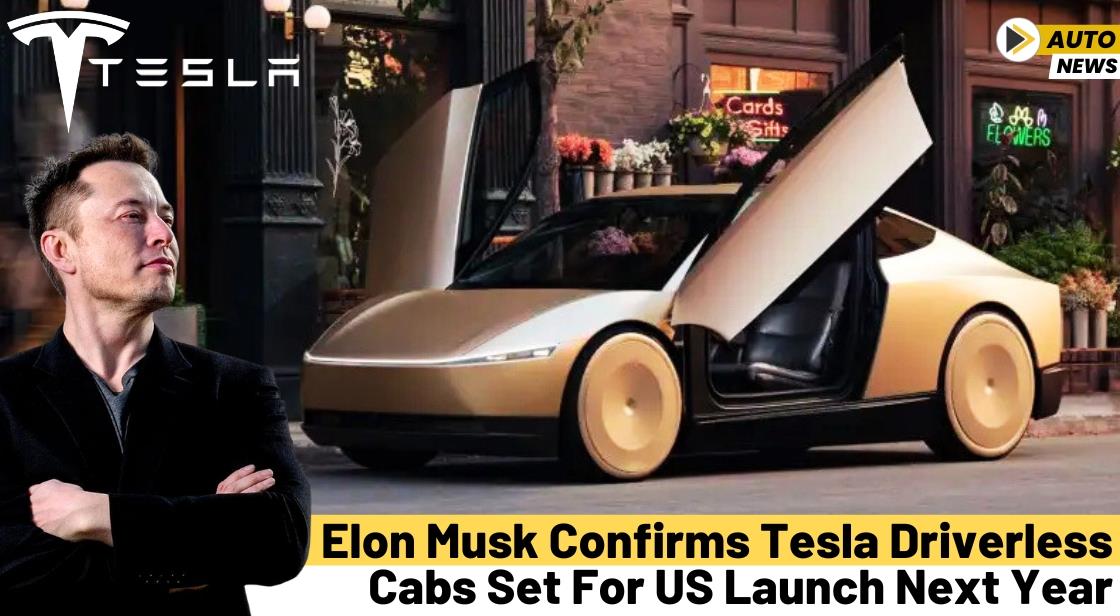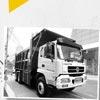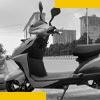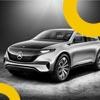Elon Musk Confirms Tesla Driverless Cabs Set for US Launch Next Year

News Synopsis
Tesla CEO Elon Musk has announced that the company intends to introduce driverless ride-hailing services in California and Texas by 2024. This groundbreaking move is part of Tesla's broader ambitions to revolutionize the transportation industry with fully autonomous vehicles. However, the road to success will not be without challenges, as the company faces both regulatory and technical obstacles.
Speaking during Tesla’s quarterly earnings call, Musk expressed optimism about launching paid rides using fully autonomous Teslas by next year. His remarks follow Tesla’s recent unveiling of its highly anticipated robotaxi, where he promised the rollout of unsupervised self-driving vehicles by 2025. Despite initial concerns from investors after the event, Tesla has regained some market confidence with forecasts of increased vehicle sales for 2024.
Tesla's Ride-Hailing Expansion
Tesla currently operates an internal ride-hailing service for its employees in the San Francisco Bay Area, offering a glimpse of its autonomous vehicle capabilities. This service, however, is not open to the public and doesn’t involve paid passengers, which allows Tesla to operate without the need for special permits. The company’s ambition to expand into a paid, public-facing ride-hailing service marks a significant leap in its self-driving vehicle strategy.
The introduction of Tesla’s driverless cabs in California and Texas will position the company at the forefront of autonomous mobility. If successful, this would not only cement Tesla's leadership in electric and autonomous vehicles but also disrupt the traditional ride-hailing industry dominated by companies like Uber and Lyft.
Regulatory Challenges in California
Despite Musk's optimism, regulatory hurdles remain a significant barrier to Tesla's ambitious plans, particularly in California. The state is known for having stringent regulations when it comes to autonomous vehicles, and Tesla will need approval from both the California Public Utilities Commission (CPUC) and the state’s Department of Motor Vehicles (DMV). These agencies oversee the deployment and operation of autonomous vehicles on public roads, ensuring the safety of both passengers and other road users.
One of the key challenges for Tesla is the fact that it has not used its autonomous vehicle testing permit since 2019. This permit required the presence of a safety driver, something that Musk has indicated Tesla aims to phase out in favor of completely driverless operations. However, Tesla has yet to apply for a driverless testing permit, which is essential for conducting public trials without a safety driver behind the wheel.
Musk acknowledged the complexities of gaining regulatory approval in California, noting that while the company is confident, the process is not entirely within their control. The approval process can be lengthy and is influenced by various factors, including public opinion, safety concerns, and political considerations. Tesla will need to work closely with both the CPUC and DMV to navigate these regulatory waters.
The Path Ahead in Texas
In contrast to California, Texas offers a more favorable environment for Tesla’s autonomous vehicle ambitions. The state has fewer regulatory barriers when it comes to testing and deploying self-driving cars, making it an attractive option for Tesla’s initial launch. Musk hinted that the driverless ride-hailing service could roll out more quickly in Texas, where local regulations are more lenient.
Texas’s open approach to autonomous vehicle technology aligns well with Tesla’s aggressive expansion strategy. With fewer obstacles, Tesla could use Texas as a proving ground for its driverless services before scaling up to other states and regions. If Tesla can demonstrate success in Texas, it may also help sway regulators in more restrictive states like California to ease their policies on autonomous vehicles.
Full Self-Driving System Under Scrutiny
At the core of Tesla’s robotaxi and driverless ride-hailing plans is its Full Self-Driving (FSD) system, a technology that has been the subject of significant scrutiny. The FSD system, which allows Tesla vehicles to operate autonomously in certain conditions, has faced criticism following several accidents involving Teslas equipped with the software.
The National Highway Traffic Safety Administration (NHTSA) is currently investigating multiple incidents involving the FSD system, raising questions about the safety of fully autonomous vehicles on public roads. These accidents have led to heightened concerns among regulators and the public about the reliability of Tesla's self-driving technology.
Despite these concerns, Musk remains confident that Tesla’s autonomous vehicles will be ready for commercial deployment by 2024. The company has been working to improve the FSD system through software updates and extensive testing, and Musk has often emphasized that self-driving cars will significantly reduce traffic accidents once the technology matures.
Overcoming Investor Concerns
Tesla’s ambitious plans for driverless taxis have sparked mixed reactions from investors and industry analysts. During the unveiling of Tesla’s robotaxi, some investors expressed concerns about the timeline for fully autonomous vehicles and the potential regulatory roadblocks that could delay the rollout.
However, Tesla’s recent earnings report provided a more positive outlook, with the company predicting increased vehicle sales next year. This forecast helped restore some market confidence, indicating that investors are cautiously optimistic about Tesla’s long-term prospects.
As Tesla continues to push the boundaries of autonomous vehicle technology, it is clear that the company’s vision extends far beyond electric cars. The introduction of driverless ride-hailing services could reshape the transportation landscape, offering a glimpse into a future where fully autonomous vehicles become a common sight on city streets.
Looking Ahead
Tesla’s plans to launch driverless cabs in California and Texas represent a bold step toward realizing Elon Musk’s vision of a world where autonomous vehicles dominate the roads. While regulatory and technical challenges remain, Tesla’s relentless pursuit of innovation and its ability to overcome obstacles suggest that the company is well-positioned to lead the charge in autonomous mobility.
The coming year will be crucial for Tesla as it works to secure the necessary regulatory approvals and fine-tune its self-driving technology. If successful, the rollout of driverless ride-hailing services in 2024 could mark the beginning of a new era in transportation, one defined by convenience, efficiency, and safety.









